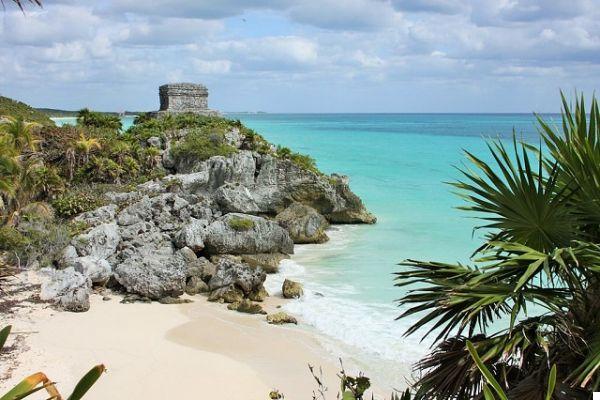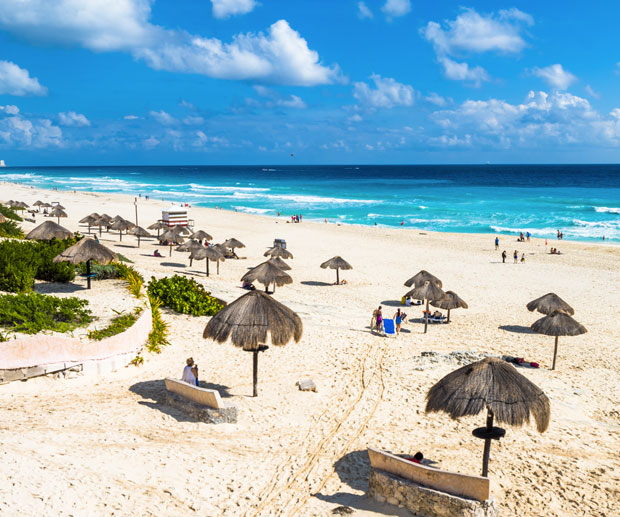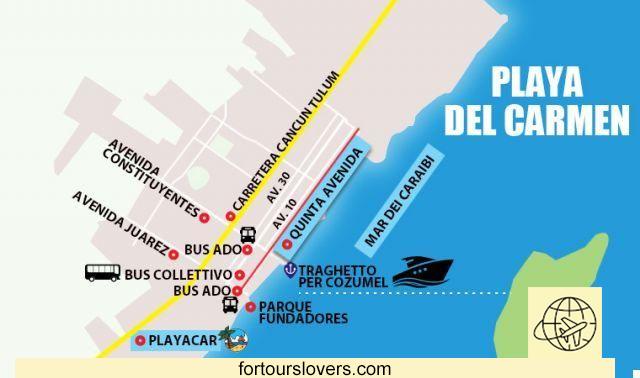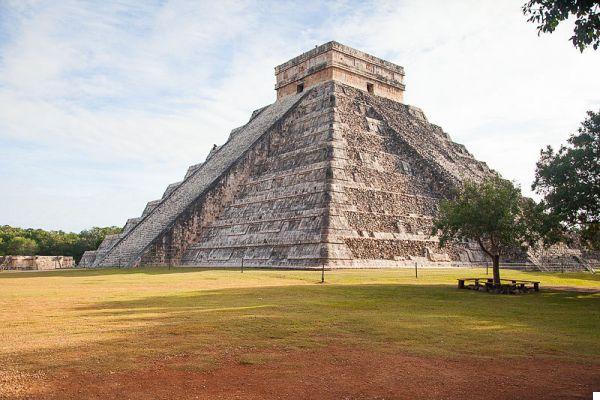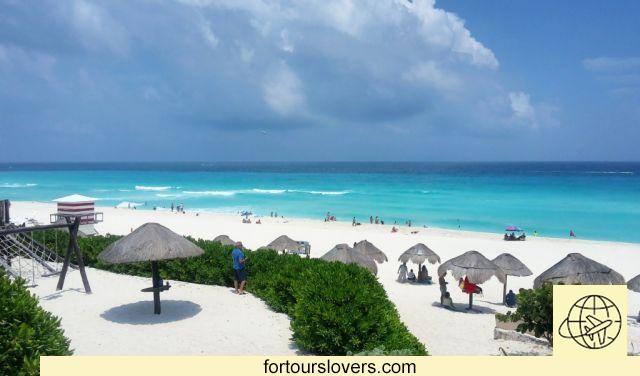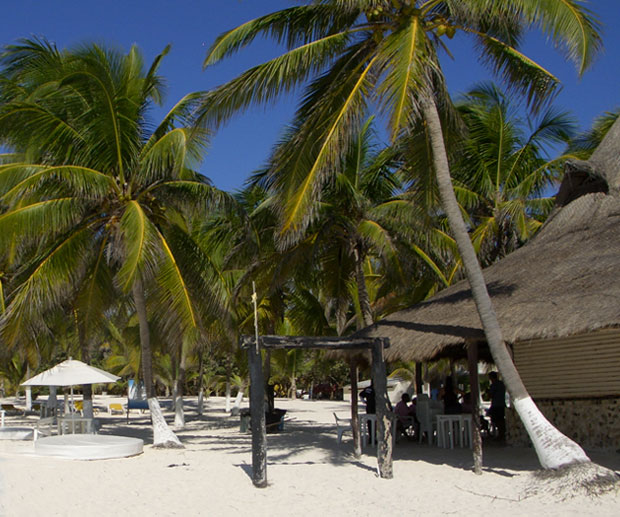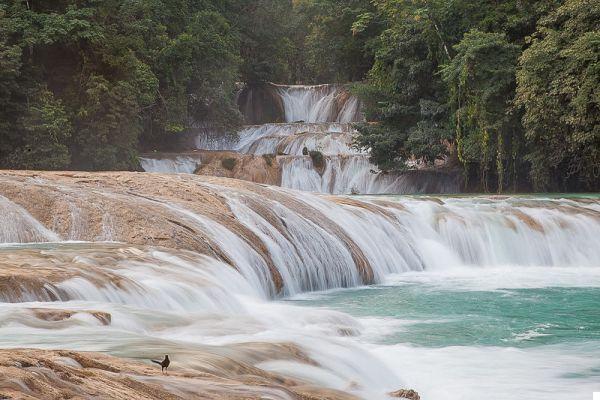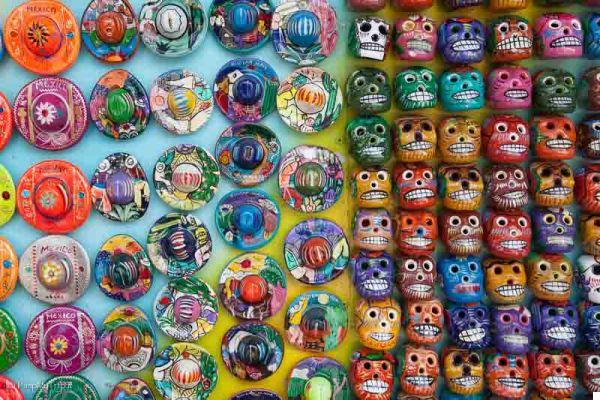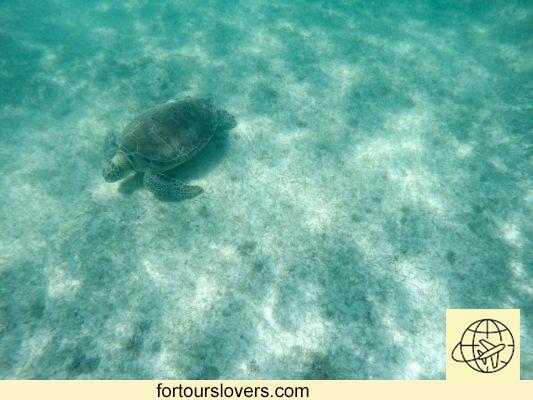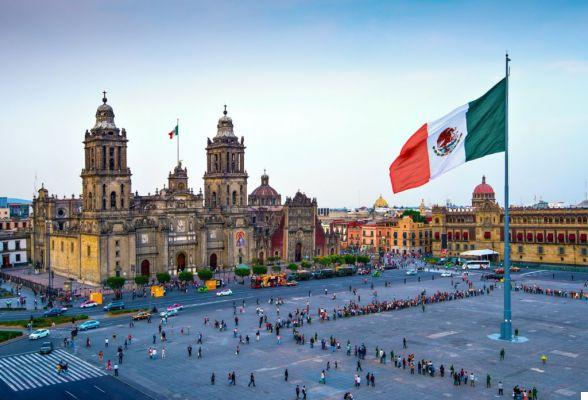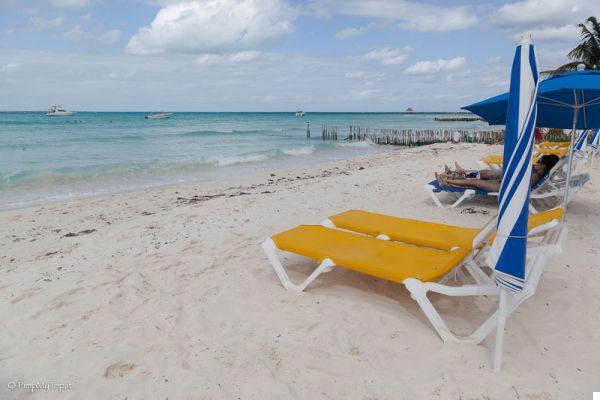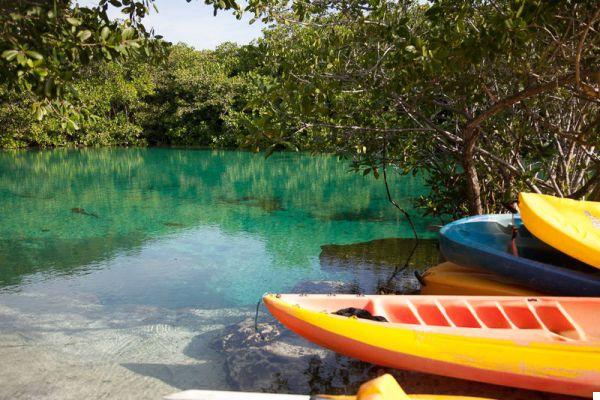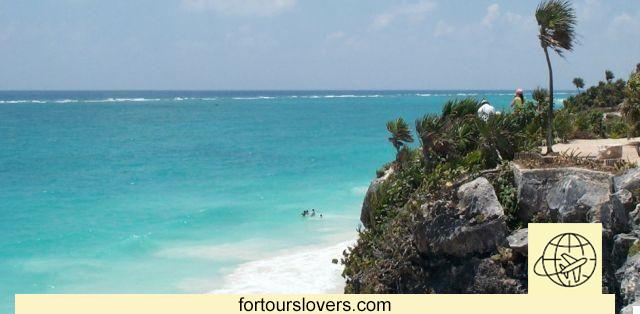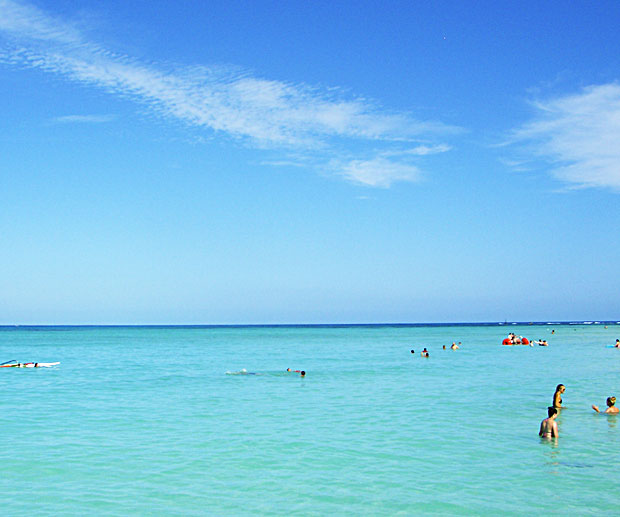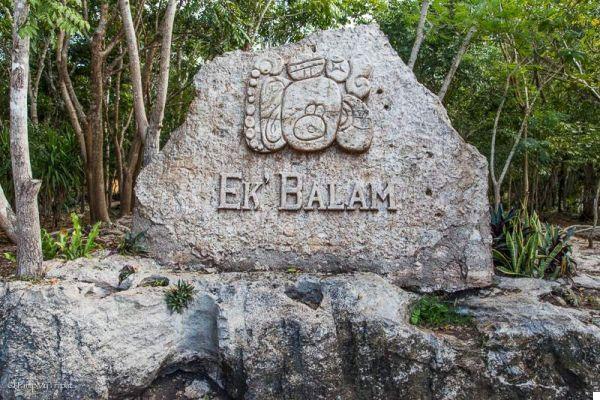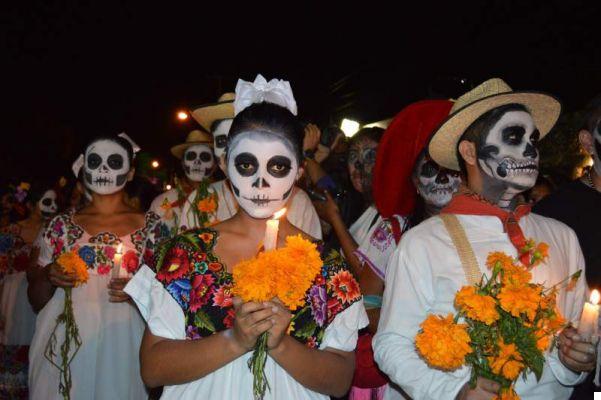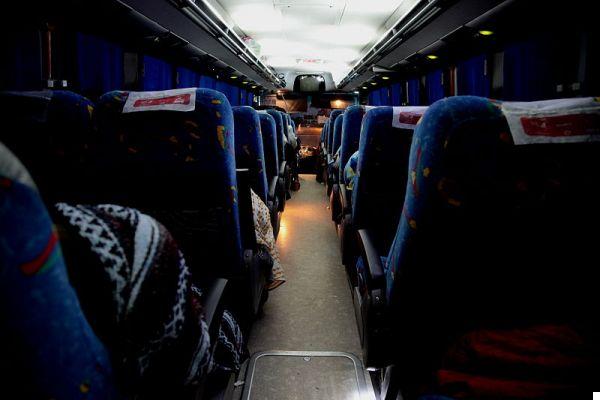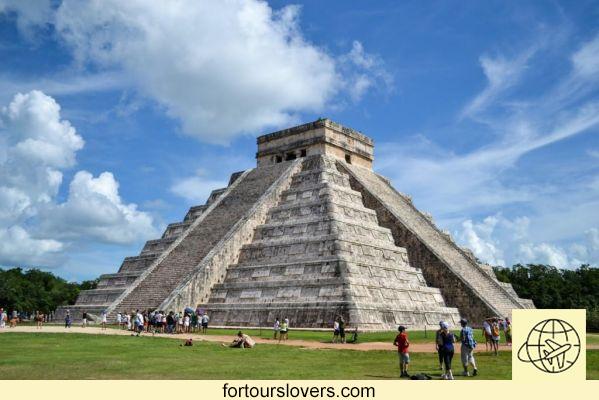
Tips for traveling to Mexico
Costs in general
The main cost of a trip to Mexico is the flight. The prices on the spot are cheap, although I actually expected Mexico to be cheaper than it really is. You can decide the costs of the hotels yourself when booking; from the comfort of your home you can choose how much these will affect your budget.
It is not a really cheap trip but it is absolutely not expensive. Just pay attention and you won't have any major problems. Keep in mind that the most touristic areas are obviously the most expensive. Quintana Roo is definitely more expensive than both the Yucatan and the Chiapas, on the other hand, the effects of mass tourism on the Riviera Maya are felt. The cheapest area is that of San Cristóbal de las Casas, both for handicrafts, both for food and accommodation.
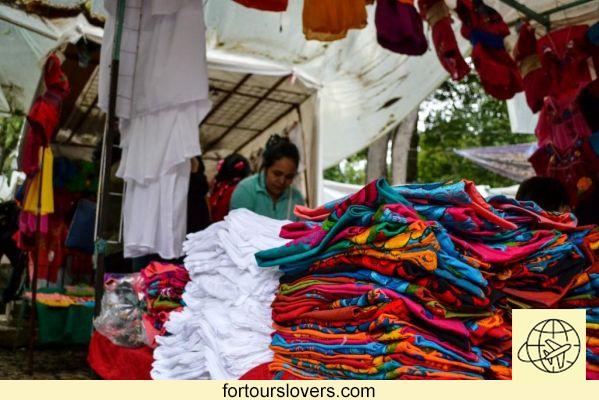 Where to exchange euros for pesos?
Where to exchange euros for pesos?
In August 2016 the exchange rate was 19/20 pesos for each euro. However, this exchange rate can be found in the city. Don't change all your cash at the airport as they have a significantly cheaper rate. Change a few in order to pay the first expenses. At the airport they made me a change equal to 15 pesos for each euro.
Travel by car in Mexico
THEtravel itinerary in Mexico I told you about is an On The Road. These tips and tricks that I am about to give you are essential.
Advice on car rental: you have two possibilities.
Or book the car directly on site and in this case just rely on one of the thousands of guys who offer rentals outside the Cancun airport. Or book the car directly through the online booking services. I have relied on Rentalcars.com and I found myself very well. If you need more information, this article of mine might be useful: like renting a car.
I booked one Toyota Yaris station wagon for the price of 365 € for the period from 8 to 23 August inclusive with collection and delivery at Cancun airport. The company used was Mex. Beware that Mex is known as Fox / Mex.
Caution: if you collect and deliver in the same place you have no additional cost. If, on the other hand, you return it to a different place, you have to pay for the drop-off which often amounts to several hundred dollars. It's not worth it. Discover -> What is the drop off and how to make a one way rental.
Warning # 2: when you arrive in Cancun, it is easy for no one from your car hire to pick you up. Some offices are located away from the arrivals area of the airport. You may find yourself in two situations. Or they pick you up directly at the airport and wait for you with a sign and your name written on this sign. Or you have to call the rental company and remind them that you have arrived. Don't worry, both with poor Spanish and poor English, you will do very well.
Driving license: a simple valid European driving license is enough. I take this opportunity to remind you that if you needed it I wrote an article on how to get an international driving license.
Car trunk: it seems trivial but it is important to carefully evaluate the space available. If you take a car that is too small and arrive with two trolleys or large backpacks, they probably won't fit and you will be forced to keep one in the back seat. Here, it is not really a recommended thing. In Spain I would never leave a backpack on the back seat of the car, much less in Mexico, and not because it is not safe (indeed), simply because it is enough to use common sense and avoid attracting possible problems.
You might find it useful -> 9 tips for traveling ontheroad
Speed limit: on motorways the maximum speed is 110 km / h. In built-up areas it drops below 50 km / h. On fast roads not considered motorways the limit varies from 60 km / h to 100 km / h
Automatic or manual? Know that this is the most important advice I am about to give you. Absolutely automatic transmission! Mexico, especially the road between Palenque and San Cristobal, is littered with topes that will force you to stop almost always. In this case, the automatic gearbox comes in great help, do you know every time to put in first gear and start again ?! You would come out exhausted!
GPS Navigator: not wanting to use the data connection, let alone buy a Mexican card, I used an offline navigator, it's called Sygic. I have android and I found it easily in the play store. For those with IOS it is necessary to verify.
What are the topes? Forget the classic bumps. These are real concrete bumps that, if you take them at more than 5 kilometers per hour, will smash your car. They will be your torture, but certainly they will not make you lose the desire to visit this beautiful country.
There are different types of topes: the worst are made of concrete and are very high, others are made of metal, another version is with just sketched bumps. In addition to the topes there are also the vibradores, or strips that make the machine vibrate when you pass over them. Never mind, they only serve to tell you to slow down because you are entering a "Pueblo", a town.
Roadblocks: especially in Yucatan we found numerous barrages by the police, always in combat uniform with machine guns and bulletproof vests. I have "only" a couple of particular episodes to tell. They stopped us twice one of which searched the car.
First time happened on the highway. There was a police blockade similar to those seen in movies.
Headlights focused on the car, I stop near the military, lower the window and the policeman searches the car from outside with a flashlight. At the moment a bit of fear has risen, but we have not had any problems.
The second time it was in broad daylight: a search of the car complete with a Mexican policeman who, after making me move the car in the shade, wanted to have a chat about our itinerary. In the meantime, I was keeping an eye on my colleague, you never know.
In Chiapas and Quintana Roo this type of blockage is less frequent.
Road conditions: average good. The only stretches with irregular asphalt are those from Palenque to San Cristobal. The outlying streets of the cities are also poorly maintained, a particular mention for Bacalar where there are more holes than houses.
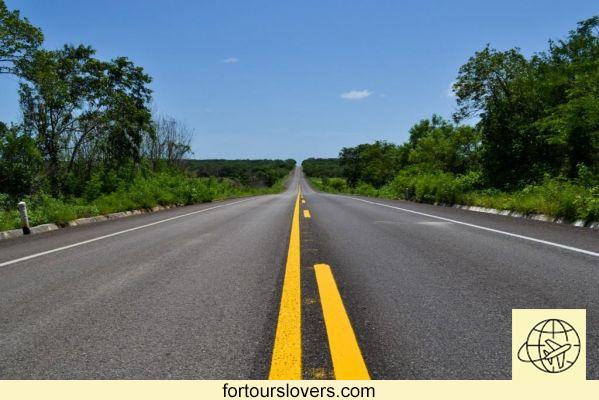
The Mexicans and the four arrows: you will often see the 4 arrows inserted (in motion) by the cars that will precede you. I don't know if it is written in the Mexican highway code, I think so, in any case Mexicans have an immoderate passion for the four arrows. You may think that they only activate them in case of imminent danger. But no, it isn't. The 4 arrows are inserted in the sections where there are road works and in the sections where you are close to a town. To tell the truth, you will see the 4 arrows in the town less often than those of the work in progress. What I'm trying to tell you is: don't be scared if you see the 4 arrows.
Driving in built-up areas: the countries and towns of Mexico are made up of blocks like American ones. They are huge chessboards, an indefinite number of intersections and driving to places like Merida or San Cristobal is no joke. An Italian guy who lives in Tulum laughed when I asked him how the intersections worked and even he couldn't give me an answer.
Also pay attention to traffic lights. The traffic light relating to your lane is placed at the opposite end of the intersection. Ditto for the stops (which in Mexico is the sign reading HIGH). The advice I give you is to be careful in every maneuver. Better to stop even when in theory you should have priority. Mexicans are very patient when driving, so they are unlikely to play or scream at you.
Parking: there are no large car parks in the city. On the other hand, being in blocks, the parking lots are along the road. Don't expect a lot of road markings, not all parking lots are delimited by stripes, sometimes there is a wild but composed parking lot, that is, park on the side and if the other car passes, that's okay. Usually the areas where you can park at the side are indicated by a round sign with the E. When the area ends there is a sign with the E crossed out. Parking in Spanish is "Parking"... so with a" Puedo estacionar aquì? " or "Puedo estacionarme aquì?"You always get by. There are few but there are also larger paid parking lots and for a city like Merida I recommend them very well.
Recommended food and restaurants
Mexican cuisine is very good but in the long run it is monotonous. There are few times that we have eaten really well, but the food aspect is subjective. It is certainly a rather heavy type of cuisine where the main foods are meat, corn tortillas, beans. On the coast you can also find good fish.
The service in the restaurants is pretty fast. They have no conception of being at the table. and eat their meal quickly. Speaking with an Italian restaurateur he told us that they often ask for the bill while they are still eating the last bites.
The waiters are pretty on point. Sometimes they are pressing and constantly asking if you want something else. Don't worry, this is normal. I guess this is related to tipping. The more attention they pay to the customer, the greater his satisfaction and therefore he will be more generous with the tip.
Speaking of tips, or "tip”As it is called by the Mexicans. It is not mandatory but the ways in which it is made known are many:
- The bill may arrive with the percentage of tip already added to the total and if you do not want to leave it, just let them know.
- The bill may arrive smoothly with the wording "tip not included" and in this case it is up to you to choose if and how much to tip.
If you pay by credit card, the POS will present you the possibility to leave a tip.
Tipping can be 5,10,15%. Generally, 10% is left.
A few small indications for where to eat along this itinerary
I will not tell you all the places I have been to, there are few that have impressed me. I list only those where I really recommend you to go and eat:
- Merida - The Chaya Maya, beautiful setting, yucateca cuisine, try the Cochinita Pibil and the Sopa de Lima.
- Palenque - Hotel Villas Kin Ha, eat outside with a pool view, excellent cuisine and cheap prices.
- Jumpsuit - La Parillada Tulum, nice Italian owner, young and easy going. Stratospheric meat. They cook typical Mexican cuts of meat such as Arrachera. One of the best places I've ever eaten grilled meat. Well-kept environment with open kitchen, water in glass bottles. Prices definitely above average but the quality is right to pay. Highly recommended.
- Puerto Morelos - Punta Corcho, high quality and cheap prices in relation to quality. A perfectly cooked fillet of fish costs 220 pesos (around 11 euros), a giant tacos stuffed with anything costs 85 pesos (around 4 euros). The waiters are a bit intrusive for how we Spaniards are used to, perhaps in a hurry but extremely attentive to detail and courtesy. I highly recommend it.
The data connection and WiFi
As I explained in the post about the itinerary, the Wifi connection in the hotels was not sufficient. Often it is found only in common areas and even in this case it works in fits and starts. In restaurants, the connection is better. Some squares, like in Bacalar, offer free WiFi.
In my case, I have not purchased a Mexican data sim. I know there is this possibility by going to a TelCel center. I preferred to remain without a data connection because I wanted to detoxify myself from this smartphone that haunts us every day. In fact, sometimes it would have served me to find some useful information when traveling.
My advice is therefore to buy a ticket if you want to feel more confident, however, know that the data connection is very good in Mayan sites and in the cities. Outside the cities, such as on some peripheral roads, it is difficult to even have the GPRS signal.
Electrical outlets in Mexico
È necessario buy the universal adapter and maybe better to buy more than one. Now that we are subjected to various cell phones and batteries, it is always necessary to have the possibility to recharge more devices.
Travel insurance
Like any trip I absolutely recommend you to take out insurance. Being in Mexico you will presumably have to take out a world policy, which is the most expensive. Venturing to such a distant place with a different health system than ours without an insurance policy is idiot. On this trip to Mexico, I had to use insurance due to food poisoning. If I didn't have it it would have been a big problem.
Paper guides or local guides?
For this trip to Mexico do it yourself I relied on the well known Lonely Planet. I always kept it close at hand because it is always a point of reference. For the Yucatan peninsula, a special one has been prepared which you can find here: Lonely Planet: Yucatan and Chiapas . In case this is not available, that is just as useful general of Mexico .
The printed guide will be yours best ally during the trip. It certainly doesn't compare to the wisdom of the local guides.
In all the Mayan sites you will find many guides ready to guide you. The first tip I say rely only on certified guides, you notice them from the card that they carry clearly in sight. There are many non-certified guides who try to offer their service. As for me I want the best, I spend a little more but I prefer a serious and prepared guide. The experience and memories of a trip are also the result of these small choices.
Mayan sites explained by a guide have significance completely different. Although they are all to be visited with a guide, this is not feasible for cost reasons. The only site you don't have to beg on about this is absolutely Palenque. Do it in Spanish too, it doesn't matter, you understand everything. Rely on the guide, if he is even a Mayan native so much the better.
To lower costs, I recommend finding other people willing to divide the total. We found two other Italian girls to share the guide with.
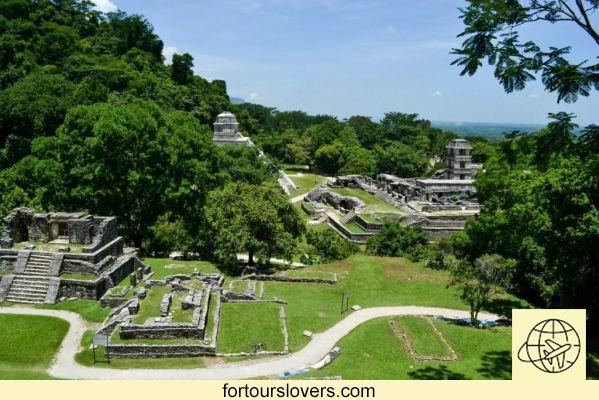 Guided tours vs do it yourself?
Guided tours vs do it yourself?
I am the first to escape from guided tours where you are relegated to times decided by others.
I like being independent. Sometimes the guided tour is necessary as in the case of the visit to the biospheres or the day to swim with the whale sharks. The excursions that I have included in the itinerary are all excursions made independently, saving something on the guided tour and gaining freedom for times and ways of living the experience. The sumidero canyon and a visit to San Juan Chamula you can do it yourself if you have a car, otherwise you have to compromise the tour proposed by the agency.
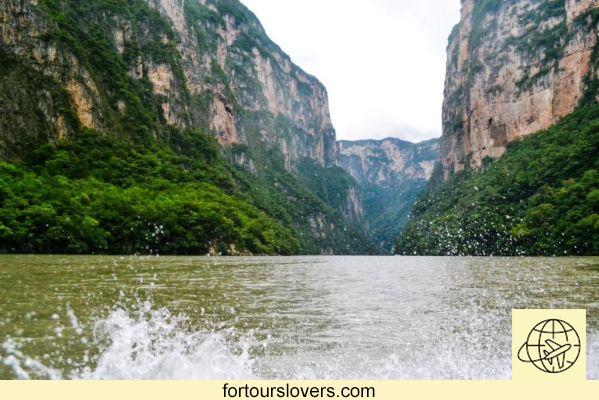
To give you an idea of the costs… the sumidero canyon cost 300 pesos each, so 600 pesos total. By doing it alone, we spent 60 pesos on the A / R motorway plus 320 for tickets and 60 for taxes. To all this we must add an 80 pesos for gasoline. 520 pesos are reached with a negligible saving. What you gain is simply more flexibility.
How is the relationship with the local people?
The soul of the people reflects the place and conditions in which they live. The Yucatan Peninsula is quite off the beaten path and the locals are aware of that tourism is a source of well-being for them.
In the state of Yucatan I have found sincere people, always with a smile and ready to give you a hand as soon as possible without wanting anything in return. In Quintana Roo, Spanish people living in Tulum told me that Mexicans in this area are more lazzaroni. It comes from me to judge the desire to work of a people, they are certainly more used to tourism and economic well-being than other places such as Chiapas where I found what in my opinion is the true Mexican soul. There is a lot of poverty, it is true, but at the same time I have found a people rich in soul, proud and in solidarity.
People report -> photos in Mexico: this is another aspect to pay attention to. In the Yucatan and Quintana Roo there are absolutely no problems with photographs. In Chiapas, however, they appreciate them less. According to local beliefs, photographs steal the soul. My advice is, as far as possible, to be discreet and respect local customs. One more photo doesn't change your life.
Bargaining in Mexico
Compared to the trip to Thailand where I bargained for everything, in Mexico there is bargaining but it is not so exasperated. The seller says a price and doesn't always accept a discount. If he accepts it it doesn't go down much. The problem is that in most shops, prices are not displayed. This means that the seller makes his price based on the tourist he is in front of. A shop owner explicitly told me that the price he was charging us, he was making the Americans 100 pesos more. Whether it is true or not I cannot know, of course we understand how the price is uncertain.
The Mexican hammocks
You must know that the area of Merida and the capital of hammock production. You will find all tastes. If you want to buy a hammock I recommend you absolutely do it here. Local culture is strongly linked to hammocks. Many do not sleep on the mattress but on the hammocks as they consider them more comfortable. There are double hammocks and hammocks that are used to make cots for children.
I don't know if it's a marketing operation but they also have a magazine that they give along with the sale of the hammock. This comic is theamakasutra.
Where to buy handicrafts?
I do not recommend buying souvenirs or various souvenirs in the Tulum area or in general on the Mayan Riviera. They will cost a lot more. I found good prices in Chichén Itzà (in the closing phase of the site) and excellent prices at the San Cristobal market.
How to travel safely in Mexico
Before leaving for your trip, register on the Farnesina website "Where are you in the world“, Enter your stages and your contacts. It is an operation that costs nothing to do but makes you traceable in case of need.
Aside from the advice of do not travel at night in general, do not travel by car at night especially in Chiapas.
In terms of safety, I never felt uncomfortable, perhaps only in the evening in Merida because the hotel was in a secluded position. For the rest I have never experienced any problems. The police are very present, I have never seen so many police cars around.
It is understood that the common sense tricks that adopted in Spain are valid in any other part of the world. Try to be as inconspicuous as possible, so avoid expensive rings, visible jewelry or other expensive personal effects. They may please you, they may make you feel at ease, but they are useless in an on the road in Mexico.
Conclusions: I hope that this post, together with that ofTwo weeks DIY Mexico travel itinerary between Yucatan and Chiapas, can really help you organize a beautiful and unforgettable trip to Mexico.
For any other information, please leave a question in the comments, I will be happy to help you and to be able to help all the others who will read the discussion and perhaps find answers to other doubts.




